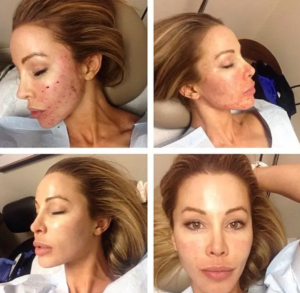
What is PRP Treatment?
What is PRP Treatment?
Platelet Rich Plasma (PRP) treatment is a type of regenerative medicine that uses the patient’s own blood to promote healing and rejuvenation. This cutting-edge therapy involves drawing a small amount of the patient’s blood, spinning it down to concentrate the platelets and growth factors, and then injecting this plasma back into the body at the site of injury or damage. By harnessing the natural healing powers of the body, PRP has been shown to be effective in treating a variety of conditions, from sports injuries to cosmetic concerns. In this article, we will explore what PRP treatment entails, its benefits, risks, and applications in different fields.

What is PRP Treatment?
What Does PRP Treatment Entail?
The PRP treatment process can be broken down into three main steps:
Step 1: Blood Draw
A healthcare professional will draw a small sample of the patient’s blood, typically between 10-60 mL, depending on the area being treated. The blood is collected in a sterile tube containing an anticoagulant to prevent clotting.
Step 2: Centrifugation
The blood sample is then placed in a centrifuge, which spins the blood at high speeds to separate the various components. After approximately 5-10 minutes, the blood separates into three layers: red blood cells at the bottom, platelet-poor plasma in the middle, and platelet-rich plasma at the top.
Step 3: Injection
Once the PRP layer has been isolated, it is carefully extracted and prepared for injection. Using imaging guidance such as ultrasound or fluoroscopy, the healthcare provider injects the PRP directly into the damaged tissue or affected area. The concentrated growth factors and cytokines found in the PRP stimulate cellular repair and accelerate healing.
Benefits of PRP Treatment
There are several advantages to using PRP treatment over traditional therapies:
- Autologous: Since PRP is derived from the patient’s own blood, there is no risk of allergic reactions or disease transmission.
- Minimally invasive: PRP treatments do not require surgery or general anaesthesia, reducing recovery time and potential complications.
- Customisable: Depending on the concentration of platelets needed, the preparation process can be adjusted to suit each individual case.
- Versatile: PRP has numerous clinical applications across multiple medical specialties, including orthopaedics, dermatology, dentistry, and aesthetics.
- Stimulates natural healing processes: PRP triggers the body’s innate ability to heal itself by releasing growth factors responsible for tissue regeneration.
Risks Associated With PRP Treatment
While PRP treatment is generally considered safe due to its autologous nature, some potential risks should still be taken into account:
- Infection: As with any invasive procedure, there is always a risk of infection. Strict adherence to proper technique and post-procedure care can minimize this risk.
- Bruising and swelling: Localised bruising and swelling may occur following PRP injections; however, these side effects usually resolve within a few days.
- Pain: Some patients report mild discomfort during and after the procedure. Over-the-counter pain medication can alleviate this symptom if necessary.
- Scarring: Although rare, scarring could potentially result from improper needle placement during the injection.
It is essential to discuss all possible risks associated with PRP treatment with your healthcare provider before undergoing the procedure.
Applications of PRP Treatment Across Medical Fields
PRP Orthopaedics
One of the most common applications for PRP is in the field of orthopaedics, where it has been used to treat various musculoskeletal conditions such as:
- Tendonitis
- Ligament sprains
- Muscle strains
- Arthritis
- Rotator cuff tears
- Meniscus tears
PRP Dermatology
PRP has also gained popularity in dermatology for addressing skin issues like:
- Scar reduction
- Hair loss restoration
- Skin rejuvenation
- Acne scars
- Rosacea
PRP Aesthetics
In recent years, PRP has made significant inroads in aesthetic medicine, particularly in facial rejuvenation procedures such as:
- Vampire facelifts
- Neck lifts
- Hand rejuvenation
- Stretch mark improvement
- Under-eye circle reduction
PRP Dentistry
Within dental medicine, PRP has proven beneficial in promoting bone grafting and soft tissue healing after surgical procedures, including:
- Periodontal surgeries
- Dental implants
- Bone defect repairs
- Sinus lift augmentation
What is PRP Treatment Good For
Platelet rich plasma (PRP) treatment represents a promising avenue for regenerative medicine, capitalizing on the body’s inherent capacity for self-healing. Through a series of simple yet precise steps drawing blood, centrifugation, and injection – healthcare providers can effectively administer PRP to target specific areas requiring therapeutic intervention. Benefiting from minimal invasion, versatility, customizability, and low risk profile, PRP presents ample opportunities for integration across diverse medical disciplines, ranging from orthopaedics and dermatology to aesthetics and dentistry.
5 Comments
Can You Get PRP Injections on the NHS – Best PRP Finder
[…] What is PRP Treatment? […]
March 17, 2024Top 7 Best Hair Loss Treatment for Male – PRP Finder
[…] What is PRP Treatment? […]
March 17, 2024Complete Guide to PRP Treatment UK – Best PRP Finder
[…] What is PRP Treatment? […]
March 18, 2024Best 3 Month PRP for Hair Loss Before and After – PRP Finder
[…] What is PRP Treatment? […]
March 18, 2024

What is PRP Treatment for Face? Best Vampire Facial PRP
[…] What is PRP Treatment? […]